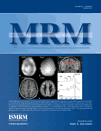Validation of VASO cerebral blood volume measurement with positron emission tomography
Abstract
Cerebral blood volume (CBV) has been shown to be an important biomarker in a number of neurological disorders and in the quantitative interpretation of functional MRI. One approach to determine CBV in humans is vascular-space-occupancy MRI, and this technique has been applied to the studies of brain glioma, Schizophrenia, and Alzheimer's disease. However, validation of this technique with a gold standard method has not been reported. In this study, we compared vascular-space-occupancy MRI with a radiotracer-based positron emission tomography technique in a group of healthy subjects. It was found that regional CBV measured with vascular-space-occupancy MRI was highly correlated with that of the positron emission tomography data (R = 0.79 ± 0.10, N = 8). Furthermore, absolute CBV values quantified by vascular-space-occupancy were also in excellent agreement with those by positron emission tomography (slope = 1.00 ± 0.15). Because of the differences in the labeling principles between the two modalities, systematic CBV differences were observed in large vessel and ventricle regions. Magn Reson Med, 2011. © 2010 Wiley-Liss, Inc.




